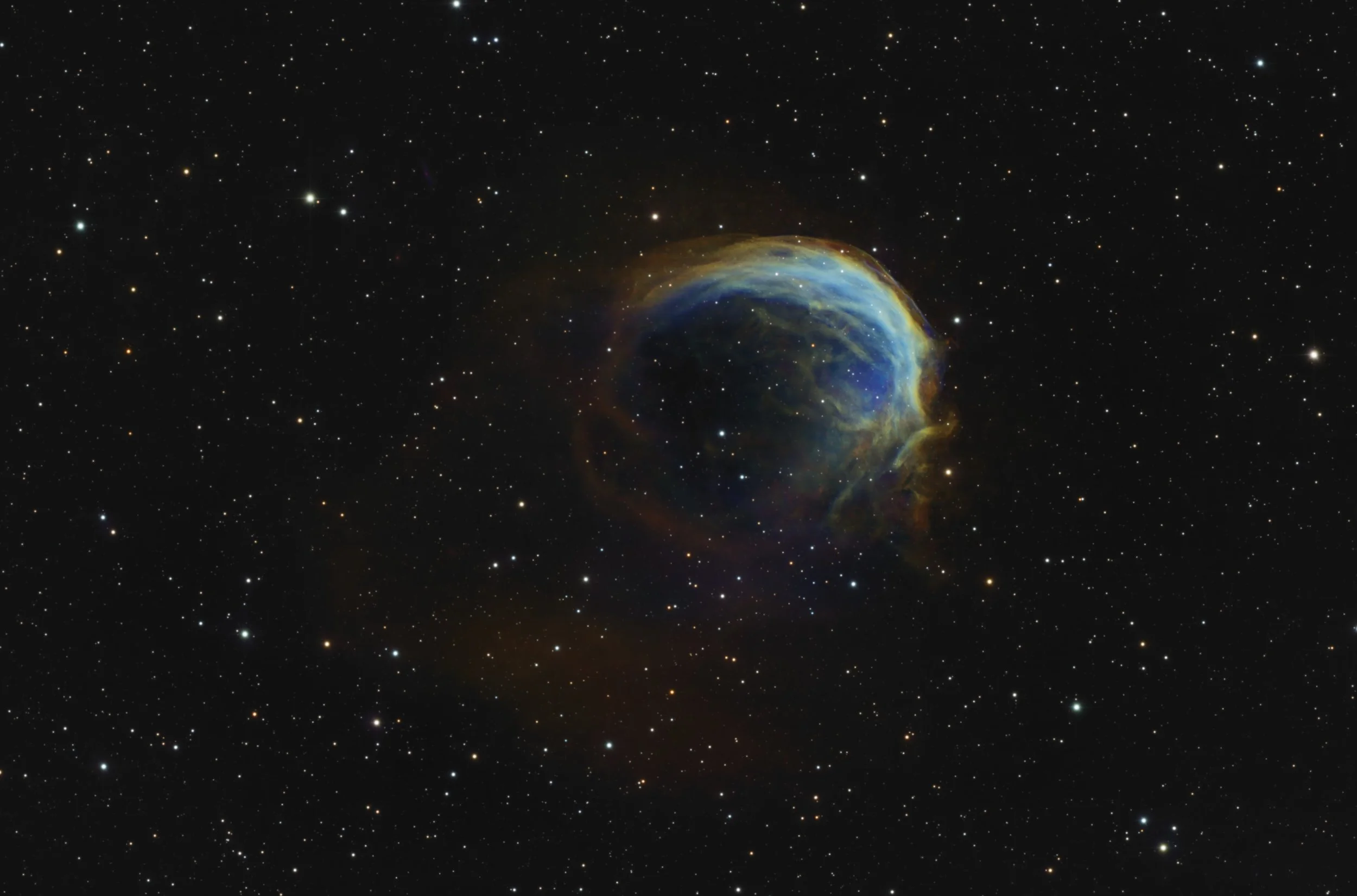Sh2-188
Shrimp Nebula
37’ x 25’ | 0.3”/px | 7385 × 4876 px
Cassiopeia
RA 1h 30m Dec +58° 28’ | 180°



Sh2-188, also known as Shrimp nebula, is a planetary nebula located in the constellation Cassiopeia. Despite being classified among emission nebulae, Sh2-188 stands out as a planetary nebula, formed from the outer layers of a dying star. What makes Sh2-188 particularly intriguing is its asymmetric, crescent-shaped appearance, which sets it apart from the more symmetrical planetary nebulae. This distorted shape is believed to be the result of the nebula's interaction with the interstellar medium (ISM) as it moves rapidly through space. The central white dwarf star is shedding material in a trailing arc, creating a comet-like structure, with a bright bow shock at the leading edge and a faint, trailing wake behind. Sh2-188 lies approximately 850 light-years away from Earth and spans a region of about 13 light-years across. The positioning according to the annotation script in PixInsight seems a bit off. This is probably an issue in the underlying VizieR database, which sometimes happens.
source: ChatGPT
Data Acquisition
Data was collected over 11 nights during the month of February 2025 using a 14” reflector telescope with full-frame camera at the remote observatory in Spain. It was gathered in narrowband using Ha, OIII and SII filters. For proper star colours, additional data was collected using short RGB exposures. A total of about 24 hours of data was combined to create the final image.
Location Remote hosting facility IC Astronomy in Oria, Spain (37°N 2°W)
Sessions
Frames
Equipment
Telescope
Mount
Camera
Filters
Guiding
Accessoires
Software
Planewave CDK14 (2563mm @ f/7.2), Optec Gemini Rotating focuser
10Micron GM2000HPS, custom pier
Moravian C3-61000 Pro (full frame), cooled to -10 ºC
Chroma 2” Ha, OIII, SII (3nm) and R, G, B unmounted, Moravian filterwheel L, 7-position
Unguided
Compulab Tensor I-22, Dragonfly, Pegasus Ultimate Powerbox v2
Voyager Advanced, Viking, Mountwizzard4, Astroplanner, PixInsight 1.9.3
Processing
All processing was done in Pixsinsight unless stated otherwise. Default features were enhanced using scripts and tools from RC-Astro, SetiAstro, GraXpert and others. Images were calibrated using 50 Darks, 50 Flats, and 50 Flat-Darks, registered and integrated using WeightedBatchPreProcessing (WBPP). The processing workflow diagram below outlines the steps taken to create the final image.
The nebula is extremely faint. To illustrate this, see the image below with three single calibrated frames for each of the H-alpha, OIII and SII filters. Imaging was conducted throughout the month of February, and included a period of full moon. Narrowband imaging is known to be less affected by the moon, but not immune to some influence. Even a total amount of 24h of total exposure still made it a difficult job to separate the fainter parts of the nebula from the background.
Individual calibrated frames for each of the narrowband filters. The signal is very weak, especially in the trailing part behind the much brighter arc.
With so little separation between the object and the background, some extra steps needed to be taken. The starless images of the narrowband channels had left a few halo’s from some bright stars. During the false-colour stretching this can create strange effects, so as a precautionary measure they were eliminated using the Blemish Blaster script from Seti Astro. Also some extra neutralisation of the background was applied on the final image, using a range-mask.
The rest of the processing followed a standard processing workflow.
Processing workflow (click to enlarge)
This image has been published on Astrobin

